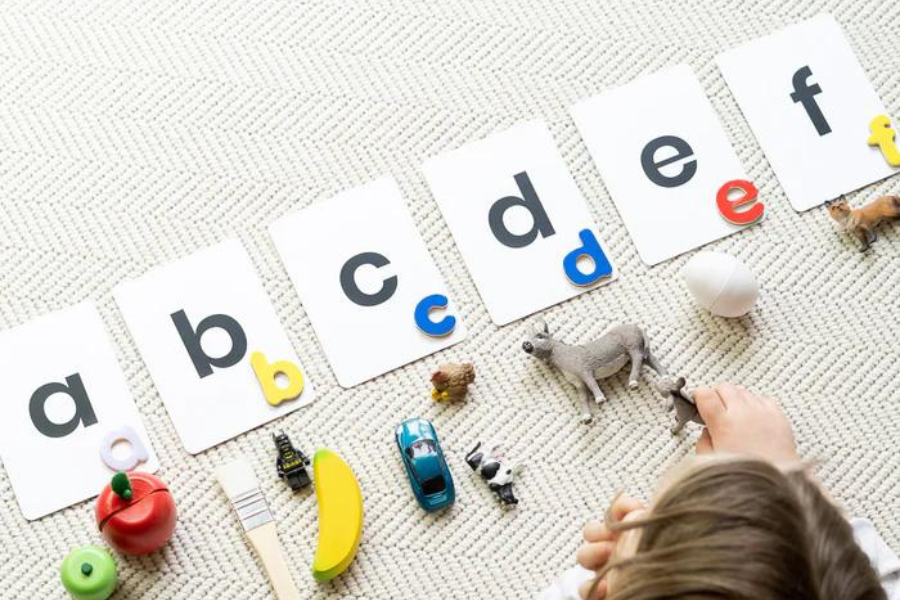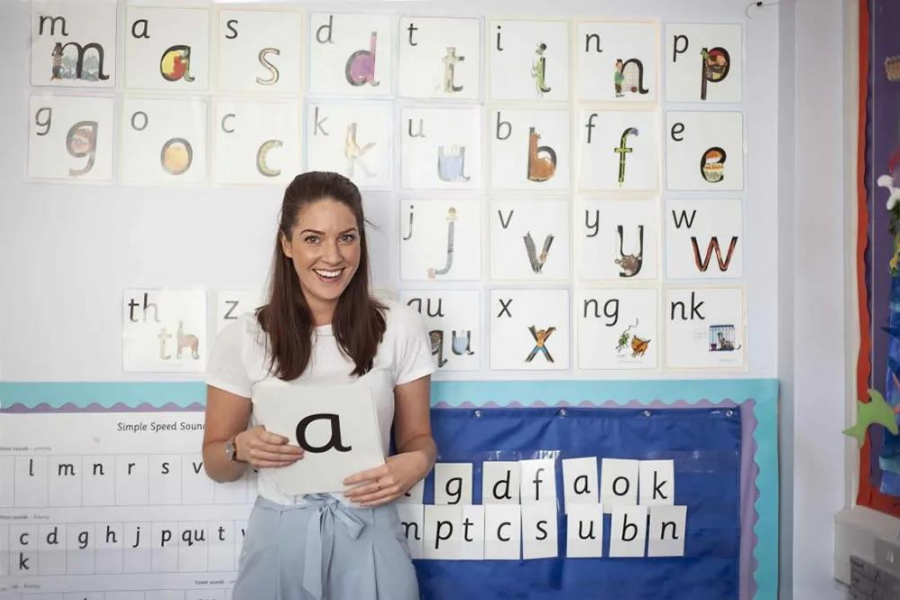
Making it necessary for young students to master them early on, Phonics Sounds of Alphabets form the base for effective reading and writing abilities. Each letter in the alphabet carries a special sound, which, when taught properly, helps kids connect letters with the words they see daily. Teachers allow children to decode unaware words with confidence and fluency by putting efforts on Phonics Sounds of Alphabets. It not only builds their spelling and pronunciation abilities, paving the way for a strong language base but by knowing the Phonics Sounds of Alphabets it also increases a child’s capability to read.
Key Features of Phonics Sounds of Alphabets
Helping kids connect sounds with letters and developing their reading and writing abilities, phonics plays an important role in early knowledge. Knowing the key features of phonics sounds of alphabets is necessary for building a strong base in language growth.
Here are five prominent aspects that define the essence of phonics sounds:
Letter-Sound Correspondence
– The relationship between letters and their respective sounds is highlighted by phonics.
– Each alphabet letter has a particular sound, which helps children decode words successfully.
– Learning these connections aids in building fluency in reading and writing.
Short and Long Vowel Sounds
– An important part of phonics is distinguishing between short and long vowel sound.
– This feature lets students to know the differences in pronunciation, increasing spelling and word identification abilities.
Blending of Sounds
– Combining individual sounds to form words is the technique of blending.
– To make reading easier and more intuitive, children learn to merge consonants and vowels smoothly.
Recognition of Digraphs and Consonant Blends
– Digraphs are taught to children through phonics (two letters making one sound, e.g., “sh” in “ship”) and blends (e.g., “bl” in “blue”).
– Vocabulary and improve pronunciation when these elements expand.
Phonics Rules for Decoding and Encoding
– Particular rules, such as silent letters, soft and hard sounds, and spelling patterns are included in phonics.
– These rules guide children in reading unfamiliar words and writing correctly.
Teachers and parents can create an organized and effective learning experience by putting efforts on these key features of phonics sound of alphabets. It not only lay the groundwork for academic success in reading and communication but these features also simplify language learning.
Benefits of Phonics Sound of Alphabets
To introduce children to read and write successfully phonics is a proven method. Phonics empowers young students to decode words, improve reading fluency, and increase comprehension by putting efforts on the sound associated with alphabets. Understanding the Benefits of Phonics Sound of Alphabets helps parents and teachers identify its importance in early education.
Improves Reading Skills
By teaching children how letters and sounds connect to form words phonics lays the foundation for reading. This systematic approach simplifies word recognition, making reading enjoyable.
Enhances Spelling Accuracy
To make it easier to spell unfamiliar words exactly learning the sounds of alphabets helps children break words into phenomes.
Boosts Confidence
Mastering phonics gives children a sense of accomplishment as they can read and write independently. This confidence motivates them to explore more challenging texts.
Develops Listening and Speaking Abilities
Improving children’s auditory capabilities, phonics puts highlight on sound recognition. This helps in better pronunciation and vocabulary development.
Encourages Critical Thinking
They develop problem-solving and analytical abilities, as children learn to blend sounds to form words and segment them for writing.
Supports Literacy Across Subjects
Allowing children to perform better across all academic subjects, a strong understanding of phonics benefits reading comprehension.
Understanding the Benefits of Phonics Sound of Alphabets makes sure that children grasp the fundamentals of language at an initial stage. Developing a lifelong love for learning, this organized method bridges gap between letter recognition and fluent reading.
How to Teach Phonics Sound of Alphabets
Fundamental step in building a child’s ability to read and write is teaching the phonics sounds of alphabets. It includes introducing children to the relationship between letters and their sounds, letting them to decode words successfully. This guide provides detailed tactics and techniques for teachers and parents on how to teach phonics sounds of alphabets in a fun and organized way.
Start with the Basics
– Introduce the 26 letters of the alphabet in an organized order, not necessarily alphabetically.
– For quick word formation, start with simple sounds like “s”,”a,” “t,” “i,” “p,” and “n”.
Teach One Sound at a Time
– Focus on a single sound for a few days to ensure mastery.
– Use repetition and reinforcement through songs, stories, and flashcards.
Use Multi-Sensory Techniques
– Motivate kids to see, hear, and feel the letters.
– Activities like tracing letters in sand, crafting letters with clay, or using phonics apps enhance learning.
Introduce Blending and Segmenting Early
– To blend sounds teach kids to make words (e.g., /c/ + /a/ + /t/ = “cat”).
– For better understanding show them how to break down words into individual sounds.
Focus on Correct Pronunciation
– Teach sounds without adding extra vowels (e.g., say “b” instead of “buh”).
– Use phonics resources like videos or audio clips for accurate pronunciation.
Practice with Real-World Applications
– Use storybooks with simple words that align with the sounds being taught.
– Highlight phonics sounds during reading sessions to reinforce learning.
Introduce Common Sight Words
– Words that don’t follow regular phonics rules should be taught to children (e.g., “the,” “said,” “was”).
– For a balanced approach combine sight word learning with phonics.
Encourage Repetition and Consistency
– Regular practice is key. Use daily drills, games, and activities to reinforce sounds.
Engaging Activities for Teaching Phonics Sounds of Alphabets
- Phonics Songs: Play songs that emphasize letter sounds.
- Sound Hunts: Ask children to find objects that begin with a specific sound.
- Letter Matching Games: To match letters with pictures of objects that start with those sounds use cards.
- Interactive Worksheets: For tracing, identifying, and coloring letters and sounds give them worksheets.
- Phonics Stories: To focus on words with the target sounds read stories.
By using these methods, you can successfully teach the phonics sounds of alphabets and help children build strong knowledge skills, making sure of a confident start to their reading voyage.

Phonics Training for Teachers
Phonics training plays an important role in providing teachers with the abilities to improve reading and knowledge among young students. It emphasizes the relationship between letters and sounds, letting teachers build a strong base for early reading success.
Vidhyanidhi Education Society provides Phonics Training for Teachers, designed to make teachers capable in teaching phonics through involving and effective techniques.
This training covers critical topics such as:
– 42 letter sounds with actions to engage children.
– Blending and segmenting techniques to enhance word formation skills.
– Identifying tricky words and teaching methods to simplify them.
-To strengthen pronunciation long and short vowel sounds with spelling rules is necessary.
– Tactics for including phonics games and activities into the curriculum.
Teachers gain the confidence to make phonics lessons involving and impactful with practical training and exercises. By providing an advanced understanding of phonics concepts and training them to address varied learning needs in the classroom this course benefits teachers.
Choose Phonics Training for Teachers through Vidhyanidhi Education Society to ensure children grasp the fundamentals of reading effectively. This training also enhances career opportunities for educators by adding a specialized skill to their profiles.
“Give your child the gift of strong reading skills at Divineland Pre Primary School!”
For more details of Divineland’s Phonics Classes, Call or Whatsapp on +918591021373/ +919082778593
For downloading the brochure of Divineland’s Phonics Classes, Click Here!
FAQs
How do I Become a Certified Phonics Teacher?
Enroll in a recognized Phonics Training Course like the one offered by Vidhyanidhi Education Society, complete the training, and receive a certification.
How Long is Phonics Training for Teachers?
Phonics training typically lasts 6 to 8 weeks, depending on the course structure and schedule, ensuring in-depth learning and practical application.
What is the Scope of Phonics Teacher?
Certified phonics teachers are in demand at preschools, primary schools, and tutoring centers, enhancing early literacy and building strong reading skills in children.


